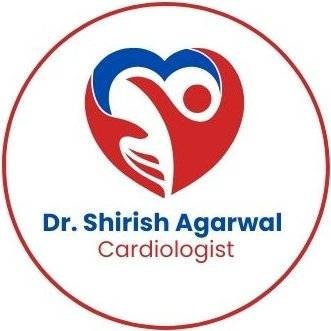Angioplasty vs. Angiography: Understanding the Difference
Heart problems can be scary, but thanks to medical advancements, doctors have ways to see what’s going on inside your heart and fix issues before they become too serious. Two of the most common procedures for heart health are angioplasty and angiography. If you or someone you know has been recommended one of these, it’s important to understand what they are, how they differ, and why they’re used.
Dr. Shirish Agrawal: The Best Cardiologist in Indore
Before diving into the details of these two procedures, it’s worth mentioning Dr. Shirish Agrawal, a highly respected and experienced cardiologist in Indore. He specializes in diagnosing and treating heart diseases and has performed numerous angioplasties and angiographies. With his expert guidance, many patients have successfully managed their heart health.
Now, let’s break down what these two terms mean.
What is Angiography?
Angiography is a diagnostic test. Its main purpose is to look inside the arteries (blood vessels) of your heart to see if there’s any blockage or narrowing. The heart needs a continuous supply of oxygen-rich blood, and blockages in these arteries can lead to chest pain, heart attacks, or other serious heart conditions.
Here’s how it works:
- A dye is injected into your blood vessels through a small tube called a catheter, which is usually inserted in the arm or leg.
- X-ray images are taken as the dye moves through your heart’s blood vessels. These images help doctors see if the arteries are blocked or narrowed.
Why is Angiography Important?
- Angiography is like a road map for your heart. It helps doctors see exactly where the problem is and how severe it is.
- If a blockage is found, doctors can decide the best course of treatment, which may include medications or procedures like angioplasty.
Angiography is a safe and relatively quick procedure. It doesn’t take long, and most patients go home the same day. It’s usually done if you have symptoms like chest pain or if your doctor suspects heart problems.
What is Angioplasty?
Angioplasty is a treatment procedure used to open up blocked or narrowed arteries. It’s performed after angiography if a blockage is found. If you think of angiography as identifying the problem, angioplasty is the solution that fixes it.
Here’s what happens during an angioplasty:
- A thin tube called a catheter with a tiny balloon at the tip is inserted into the blocked artery.
- The balloon is inflated, which pushes the blockage against the walls of the artery, widening it so that blood can flow freely again.
- In many cases, a stent (a small mesh tube) is placed in the artery to keep it open and prevent it from narrowing again.
Why is Angioplasty Important?
- Angioplasty restores proper blood flow to the heart, reducing the risk of heart attacks and relieving symptoms like chest pain.
- It’s a minimally invasive procedure, meaning it’s done without major surgery. Recovery time is much quicker than open-heart surgery.
- For many patients, angioplasty can mean avoiding the need for more complex surgeries.
Angioplasty vs. Angiography: The Key Differences
Now that you know what each procedure involves, let’s look at how they differ:
- Purpose:
- Angiography is used for diagnosis. It helps doctors see where the blockages are.
- Angioplasty is used for treatment. It helps to clear the blockages and improve blood flow.
- Procedure:
- Angiography involves injecting dye into the arteries and taking X-ray images.
- Angioplasty involves inflating a balloon to open the artery and often placing a stent.
- Outcome:
- After angiography, your doctor will have a clear picture of your heart’s condition.
- After angioplasty, the artery is opened, blood flow improves, and heart function is restored.
- When they are done:
- Angiography is usually the first step. It shows whether angioplasty or other treatments are needed.
- Angioplasty is done when a blockage is found and needs to be treated.
Which One Do You Need?
Not everyone needs both procedures. Angiography is typically the first step to understand what’s happening in your heart. If your doctor, like Dr. Shirish Agrawal, finds that your arteries are blocked, you may need an angioplasty to fix the problem. However, angioplasty isn’t always required, and sometimes lifestyle changes, medications, or other treatments might be enough to manage the condition.
Final Thoughts
Both angiography and angioplasty are essential in keeping your heart healthy. If your doctor recommends one of these procedures, it’s because they want to ensure your heart is functioning properly. With experienced hands like Dr. Shirish Agrawal, the best cardiologist in Indore, you’re in safe hands whether you need a diagnosis or treatment.
Remember, taking care of your heart is one of the best things you can do for your overall health. If you ever feel symptoms like chest pain, shortness of breath, or unusual fatigue, consult a cardiologist to make sure your heart is in good shape!

